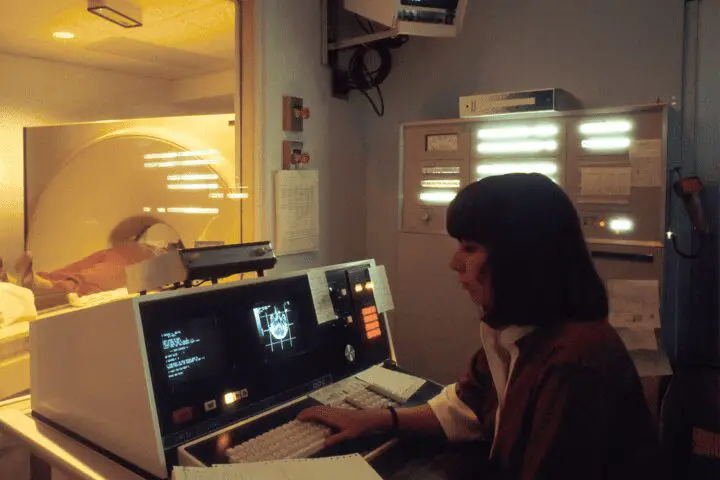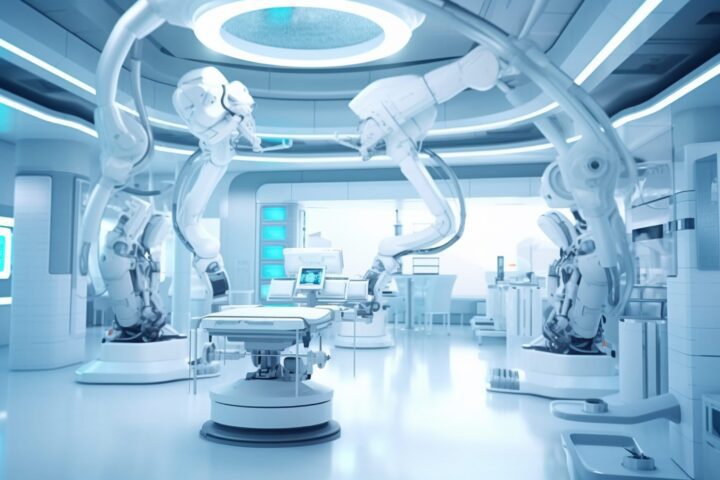Industries’ patterns and human-machine interactions have shifted due to the fast development of AI and robotics. Standing alone, both these breakthrough technologies produce a dynamic synergy where automation solutions emerge into the foreground to alter industries and offer possibilities for further developments.
This article explores the present and potential future of artificial intelligence (AI) and robotics, as well as their interdependent relationship.
Gaining Familiarity with Robotics and AI
Now that we know what each technology does, we can better grasp the complementary nature of AI and robotics:
Artificial Intelligence (AI)
Artificial intelligence (AI) is the development of computational models that mimic human intellect. Here are some of the tasks:
- Pattern identification
- Analysis of natural language
- Robotic vision
- Decision-making
AI systems evaluate data using algorithms to discover patterns, predict, and learn from new information. Subsets of AI include machine learning and deep learning, which allow for improvement in the performance of systems over time.
Robotics
The design and development of mechanical machines called robots that can interact with the physical world are what robotics involves. These robots possess the following:
- Sensors to perceive the environment.
- Actuators to provide motion and accomplish tasks.
- Control systems, many of these driven by AI for autonomous or semi-autonomous operation.
Robotics incorporates the disciplines of research linked to mechanics, electronics, and software engineering onto one adaptable entity—machines capable of carrying out various tasks.


Synergy of AI and Robotics
Combining AI into robotics develops machines holding both cognitive and physical abilities, making them even more intelligent with a broad ability spectrum.
Advanced Perception and Sensing
AI-powered robots can comprehend their surroundings using modern sensor technologies paired with computer vision. They are able to accomplish the following functions:
- Object and obstacle detection
- Distance calculation
- Real-time evaluation of environmental data
Intelligent Decision Making
AI enables robots to digest a lot of data in little time and make meaningful conclusions. These machine learning techniques let the robot adapt to new settings, refine its operations, and enhance its efficiency.
Human-Robot Collaboration
AI makes collaboration between humans and machines smooth. Robots interpret human gestures, speech, and commands through natural language processing. They can securely work among humans in shared environments, enhancing productivity.
Applications in Healthcare
AI-driven robots are used in healthcare to:
- Assist surgeons in executing precise, less invasive procedures.
- Monitor patients’ vital signs.
- Administer prescriptions and give round-the-clock care.


Applications in Logistics and Warehousing
AI-powered robots optimize logistics by:
- Managing inventory.
- Picking and packing orders.
- Performing independent navigation through complex warehouse layouts, lowering labor expenses and boosting accuracy.
Continuous Learning and Adaptation
With AI, robots may learn from their experiences and adapt to new tasks or circumstances. This makes them highly effective in dynamic situations like disaster response, where flexibility and rapid thinking are crucial.
The Benefits of AI and Robotics
The incorporation of AI into robotics delivers several advantages across many industries, including the following:
Increased Efficiency
AI-driven robots do not rest but operate day and night, which decreases the possibility of errors and speeds up challenges. This leads to higher productivity in manufacturing, logistics, and other areas.
High Degree of Accuracy and Precision
AI-driven robots perform tasks that need a high degree of precision, such as:
- Complex surgery
- Micro-electronic manufacturing
- Quality inspections
Improved Safety
By doing jobs that could be hazardous, AI-driven robots avoid mishaps involving human personnel. Application areas include:
- Nuclear plants
- Construction sites
- Disaster locations
Cost Savings
Though the initial investment in AI and robotics can be significant, the long-term benefits are reduced labor costs, fewer error rates, and optimal resource usage.


24/7 Availability
Unlike humans, robots don’t need rest or breaks. They can function uninterruptedly for always-on production and service delivery.
Applications of AI and Robotics in Various Industries
The convergence of AI and robotics is already revolutionizing various areas. Here are some notable examples:
1. Manufacturing
AI-powered robots handle tasks like welding, painting, and assembly in industries such as automotive and electronics.
- Collaborative robots, or “cobots,” work alongside people to promote efficiency and safety.
2. Logistics
- Autonomous delivery robots and drones optimize last-mile delivery.
- AI-powered systems manage inventory and streamline order fulfillment.
3. Healthcare
- Robots assist surgeons in performing precise operations (e.g., the da Vinci Surgical System).
- AI supports medical diagnosis and therapy planning.
4. Agriculture
- AI-powered drones and robots monitor crop health, spray pesticides, and aid in harvesting.
- These methods reduce waste and boost yield.
5. Service Industry
AI-powered robots handle cleaning, food preparation, and customer service in hotels and restaurants.


The Future of AI and Robotics
The future of AI and robotics is bright and holds many wonders. Here’s what we can expect:
Autonomous Systems
Robots will become more autonomous, capable of making vital decisions without human assistance. Examples include self-driving cars and autonomous drones.
Improved Human-Robot Collaboration
“Cobots” will be smarter, safer, and work seamlessly alongside people in diverse environments.
Personalization
AI-powered robots will deliver highly personalized products and services tailored to individual preferences.
Healthcare Advancements
Robots will enable remote surgeries, improved diagnostics, and individualized treatment, transforming the way healthcare is accessed and delivered.
Sustainability
AI and robotics will play a pivotal role in addressing environmental challenges by improving resource utilization, reducing waste, and promoting sustainable practices.


AI and robotics are a transformative combo that is about to alter industry after industry and help create a higher quality of life. From healthcare to logistics, these technologies are driving innovation and efficiency.
Though not without significant hurdles, such as ethical considerations and societal implications, the potential benefits greatly outweigh the risks.
The journey of AI and robotics has just begun. As further advancements unfold, these technologies promise a future where robots seamlessly integrate into everyday life, making it more productive, safe, and of higher quality.
The possibilities are endless, and the future looks brighter than ever.
































Woh I like your articles, saved to my bookmarks! .
This really answered my problem, thank you!